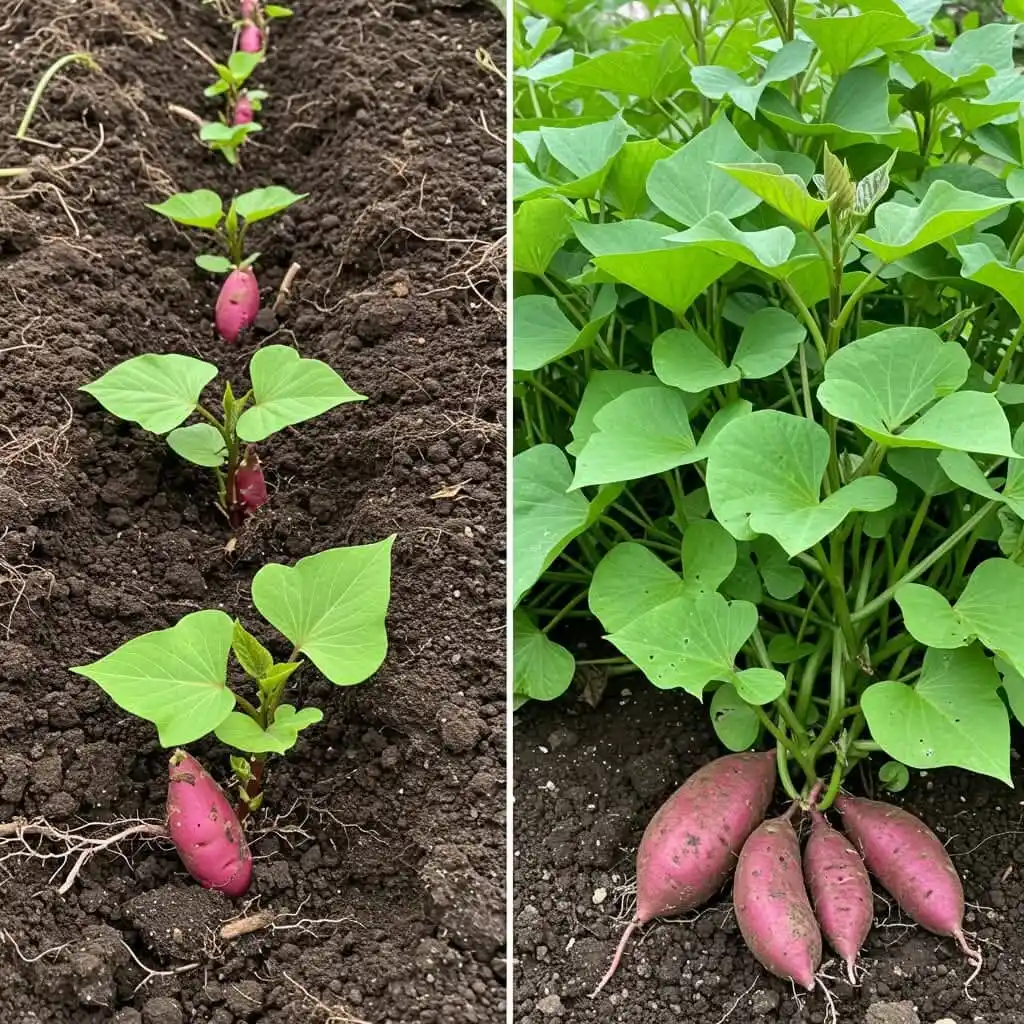
AGRONOMME🇷🇼
June 16, 2025 at 11:49 AM
I Had No Soil, No Money… Yet I Grew Tons of Sweet Potatoes!
Growing sweet potatoes might seem like a task that requires a big garden, rich soil, and plenty of resources. But the truth is, even if you don’t have any of those things—no garden, no budget, and not even soil—you can still grow sweet potatoes successfully. This might sound unbelievable, but with a little creativity and patience, you can turn whatever small space you have into a thriving sweet potato patch.
This method is perfect for those who want to grow their own food in tight living spaces or on a shoestring budget. Whether you’re living in an apartment, renting, or simply don’t want to dig up your yard, here’s how to grow sweet potatoes anywhere, even without soil or money.
Starting with What You Have
Sweet potatoes are one of the easiest root vegetables to grow. You don’t need to buy expensive slips or fertilizer. In fact, you can start from a single sweet potato that’s already in your kitchen.
Here’s how I began:
I used a leftover sweet potato that had started sprouting in my pantry.
I cut the sweet potato into sections, making sure each piece had a healthy sprout (or “eye”).
Instead of soil, I used kitchen scraps, dried leaves, cardboard, and food waste to create a growing base—think of it as compost-in-progress.
Even if you don’t have formal compost, these materials break down over time and help create a rich growing medium for your potatoes.
Using Recycled Containers
With no pots and no garden bed, I turned to what I had available—recycled plastic buckets, rice sacks, old baskets, and even broken storage bins. Sweet potatoes are very forgiving, and as long as you give the roots room to grow downward and the vines space to stretch outward, they’ll thrive.
Make sure whatever container you choose:
Has drainage holes (poke or cut some at the bottom).
Is at least 12–16 inches deep.
Has loose material at the base like sticks or shredded paper to help with drainage.
Line the bottom with dry leaves or cardboard, then add your compostable materials. Water it in and let it settle for a few days before planting.
Planting Sweet Potato Slips (or Sprouting Your Own)
If your sweet potato has sprouted, you’re already halfway there. Cut off the sprouts and place them in a shallow container of water. Within a week, they’ll develop roots.
Once the roots are visible and a few inches long, transplant them into your container setup. Place the rooted end into your compost mix, and gently cover it with more organic material or finished compost if you have any.
Water lightly to keep the mixture moist but not soggy.
Let the Vines Take Over
Sweet potato vines love to sprawl. Give them a place to grow by:
Letting them spill over balconies or hang from railings.
Guiding them up a vertical trellis or netting if you’re short on horizontal space.
Don’t worry about containing the vines too much—they’re mostly decorative and won’t interfere with tuber development below the surface.
Minimal Maintenance, Maximum Growth
Sweet potatoes are incredibly low-maintenance. Here’s how to keep them happy:
Water when the top feels dry – about 2–3 times a week depending on your climate.
Avoid overwatering, especially if you’re using food scraps as the growing medium, as this can cause rot.
Occasionally top up the containers with more organic material or compost as it breaks down.
You don’t need to buy fertilizer. Everything your sweet potatoes need can come from decomposing organic waste—banana peels, vegetable trimmings, coffee grounds, and leaves.
When and How to Harvest
Sweet potatoes typically take about 3.5 to 5 months to mature. You’ll know they’re ready when:
The leaves start to yellow and die back.
The vines stop growing vigorously.
To harvest, gently dump out the container and sift through the compost mix. You’ll be amazed at how many sweet potatoes are hiding beneath the surface—often large, plump, and ready to eat.
Let them cure in a warm, dry place for a week or two to develop their sweetness and improve shelf life.
The Results Were Surprising
Despite having no soil, no budget, and no experience, I managed to grow a bountiful crop of sweet potatoes right at home. Not only did this method work, but it also turned kitchen waste into productive garden material—closing the loop between what I ate and what I grew.
Plus, sweet potato leaves are edible too! You can harvest the young, tender leaves for use in stir-fries, soups, or salads throughout the growing season.
Final Thoughts
If you think growing food at home is out of reach because of space or cost, think again. With a little ingenuity and determination, you can grow sweet potatoes without traditional soil or fancy equipment. All you need is a sprouted tuber, some food scraps, and a container.
This method proves that growing your own food doesn’t require a garden—just a bit of creativity and care. Try it for yourself and enjoy the satisfaction of harvesting sweet, homegrown potatoes, no matter where you live.

❤️
3